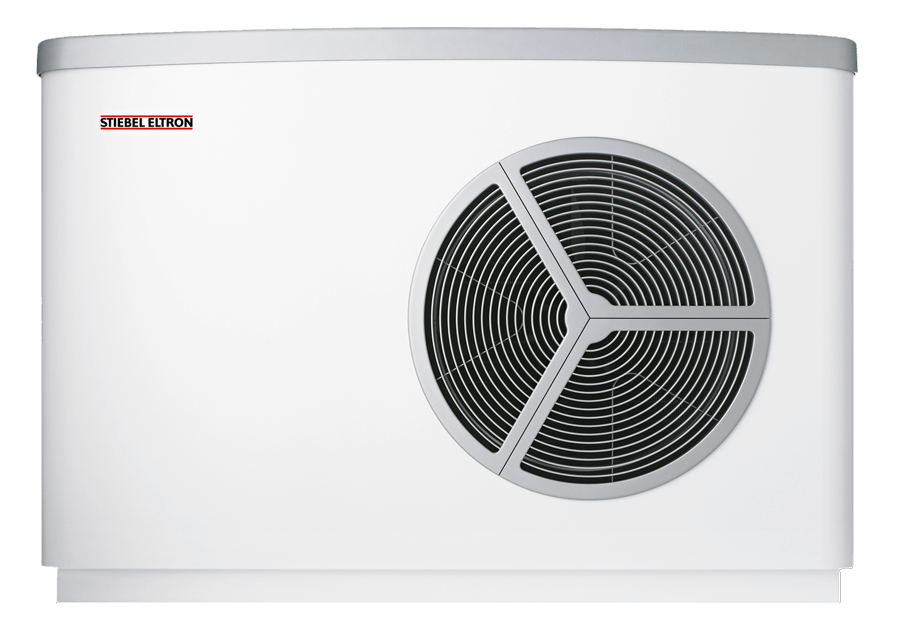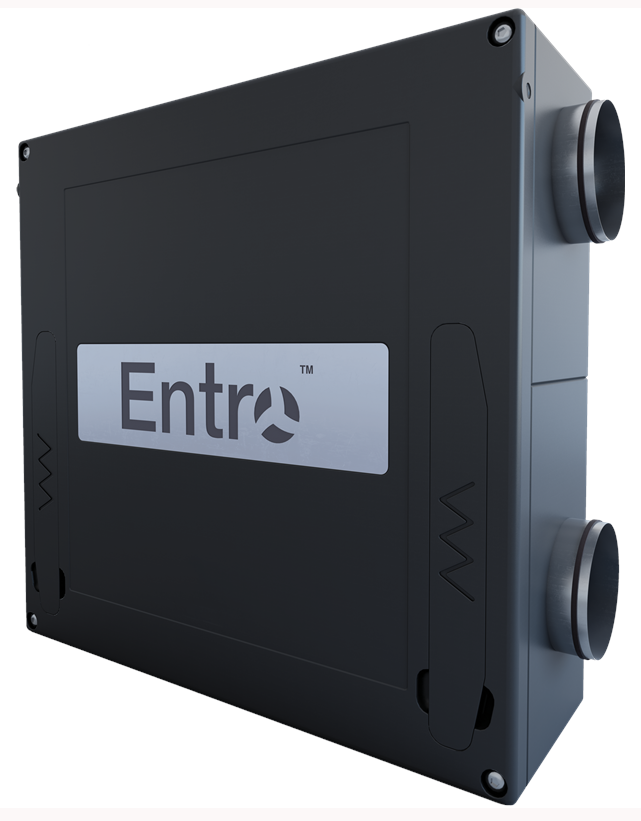Cooling with Heat Pumps & MVHR
Heat pumps, primarily used for heating, also offer significant cooling capabilities when integrated with Mechanical Ventilation with Heat Recovery (MVHR) systems, cooling your home by 8-10° C without the need for a traditional cassette style air-conditioning system.
MVHR systems are ventilation systems that provide a continuous supply of purified tempered air to living rooms and bedrooms by extracting the hot, damp air from kitchens, bathrooms and utility spaces. An MVHR recovers the heat from the extracted stale air to warm the fresh air drawn from outside, thereby reducing the amount of energy needed to keep the building at the desired temperature.
To provide whole house cooling, a coil is added to the MVHR system which utilises the chilled water from an air source heat pump running in reverse, to cool the tempered purified air which is being distributed around the house.

Stiebel Eltron Air Source Heat Pump

Airflow Entro MVHR unit
The benefits of integrating heat pumps with MVHR systems: –
- Year-Round Comfort: These systems provide both heating and cooling to ensure the temperature in the building is as desired throughout the year.
- Energy Efficiency: Both MVHR and heat pumps are energy-efficient, significantly reducing energy consumption compared to traditional HVAC systems. A heat pump typically delivers 3-5 kW of heating (or cooling) for every 1kW of electricity. An MVHR systems typically recovers around 90% of the heat energy from the air being expelled.
The benefits are clear; however, it is crucial that the MVHR system is specifically designed to deliver cooling. For effective cooling, the MVHR needs to move double the amount of air than is required for ventilation only. The significant factor for effective cooling is not only the temperature of the air expelled from the duct outlets, but that the volume of the cool air is sufficient to lower room temperatures by 8-10° C. If the volume of cool air is insufficient, the effect on the room temperature will be minimal. It’s the volume of air as much as the temperature of the air that determines whether the system will effectively cool the building.
To move more air without exceeding acceptable (and mandatory) acoustic and energy consumption levels requires a larger MVHR, with bigger pipes, and more ducting. Unless the MVHR is designed correctly, the system won’t cool the building, at best it will just slow down the speed at which the building heats up.
Another consideration is the need for a control system or Building Management System (BMS) that manages the heating, cooling and ventilating cycles of both the heat pump and the MVHR. Without a BMS, switching between heating & cooling involves manually changing settings in the three systems. If all systems are in cooling mode, and the temperature of the domestic hot water (DHW) tank falls below the set point, then the heat pump will automatically be asked to reheat the DHW cylinder. The heat pump cannot heat and cool at the same time, so either the cooling or availability of hot water will be compromised. An automated BMS managing the heating and cooling systems prevents the heating system trying to heat, at the same time as the cooling system is trying to cool – which is not energy efficient.
Combining MVHR and heat pump systems offers a highly efficient and sustainable solution for managing the temperature inside modern buildings. By leveraging the strengths of both technologies, it is possible to achieve a comfortable indoor environment with reduced energy consumption and improved air quality. The long-term benefits make these systems a worthwhile consideration for both residential and commercial applications.
